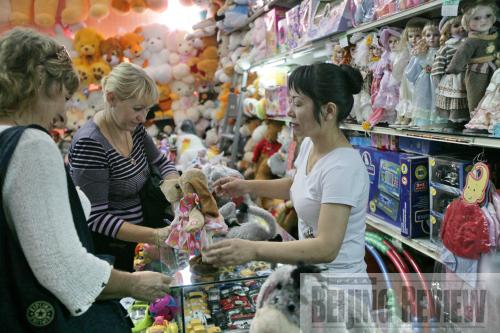|
 |
|
HOT TRADE: Yang Qingwei, owner of a toy shop in the Heihe Island International Trade Center, says Chinese toy sales are sound, especially in months leading up to Christmas (WANG XIANG) |
A glimpse at the Heihe Island International Trade Center offers a vivid insight into how far the business has progressed. The center is one of the first and most popular free-trade markets with complete facilities, including a bank and a police station. Inside, hundreds of stalls owned by traders from across the country offer an astonishing selection of clothes, gadgets and many other made-in-China trinkets. Every morning, particularly on weekends, tens of hundreds of blue-eyed Russians crowd the market to purchase Chinese products for personal use or to sell in their home markets.
Best-known for its chilly winter and vast plains of black soil, China's northeast Heilongjiang Province is gaining economic clout on the back of an industrial take-off. But its frontier boomtown of Heihe stands out for a different reason—an unparalleled link to Russia.
The ease with which people can cross the border offers the constant reminder that the two culturally and linguistically diverse countries are indeed side by side. A 10-minute water ride is all that separates Heihe from Blagoveshchensk, the sister city on the other side of Heilongjiang River and the third largest city in Russia's Far East, with a population of around 200,000.
In the 1980s, when relations between China and the former Soviet Union soured, being on the Chinese doorstep was by no means an advantage for Heihe. But now the border river is flushing with opportunities for both sides. Since the Sino-Russian ties improved in the early 1990s, the once sleepy town has become a dynamic link between the two nations that have increased trade with each other.
|
